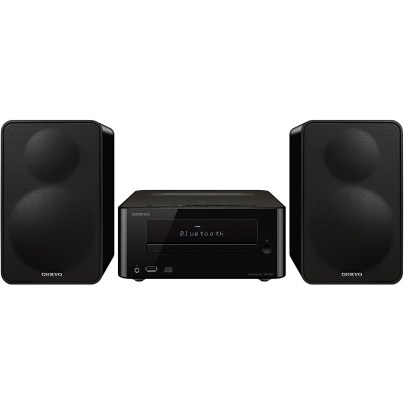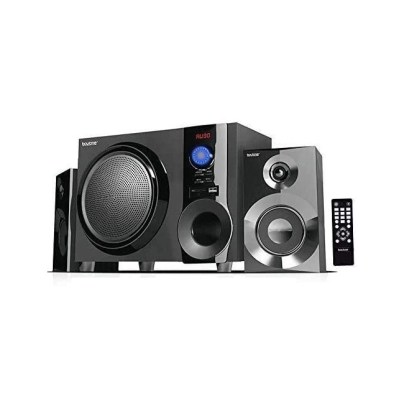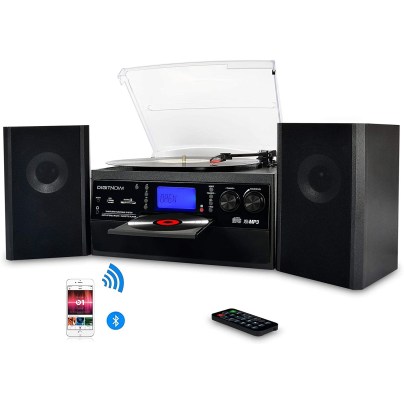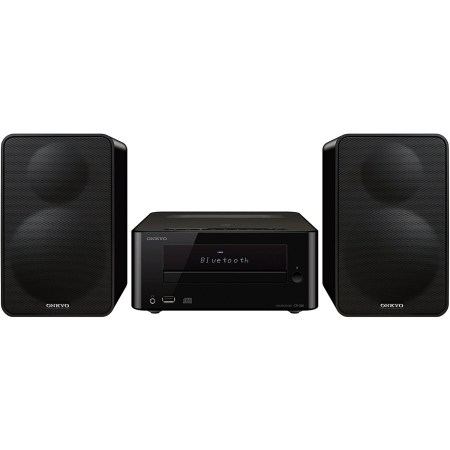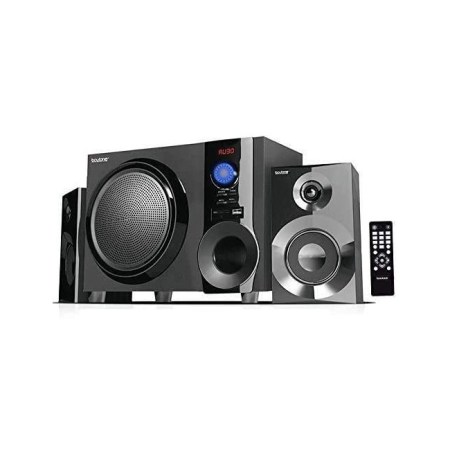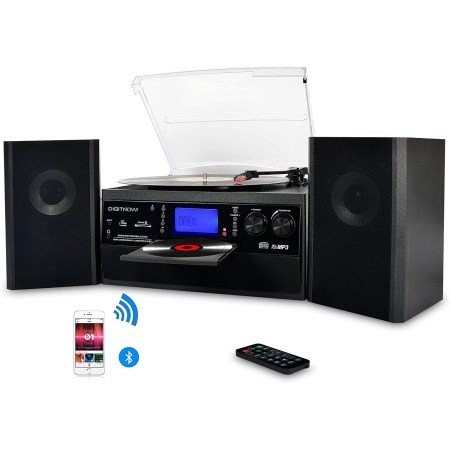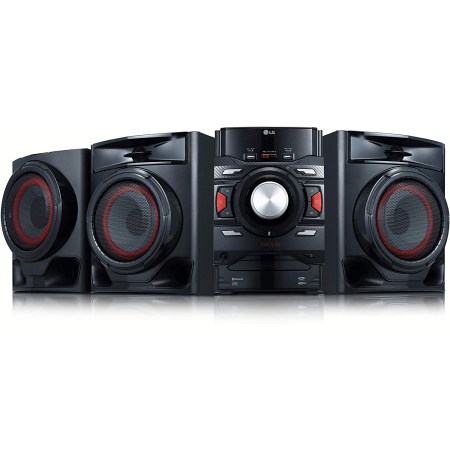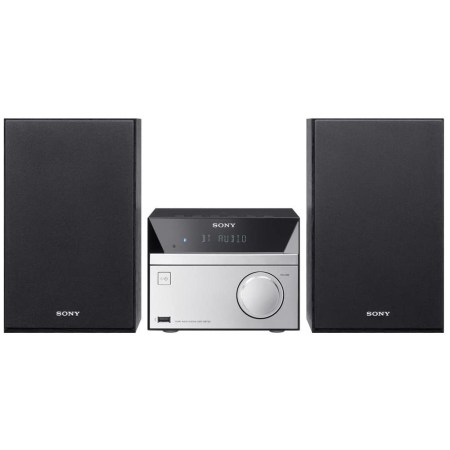We may earn revenue from the products available on this page and participate in affiliate programs. Learn More ›
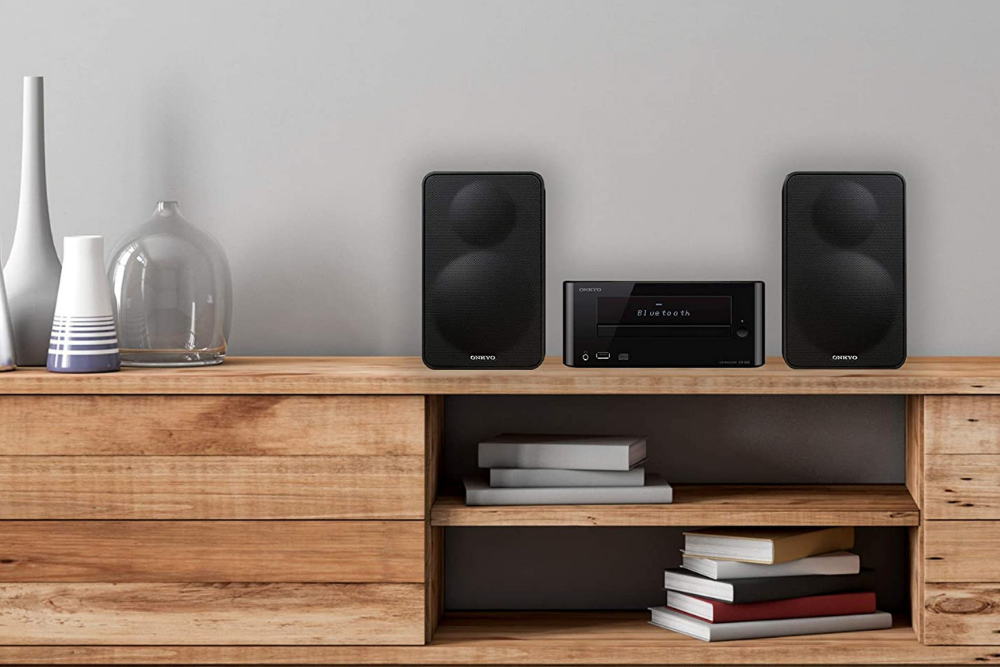
Stereos deliver audio entertainment to your home theater area, and with their modern designs, they can also contribute to its overall aesthetic appeal. In performance and likewise in look, there are plenty of options. Systems vary in their volume output, sound quality, size, and features. Some audio systems even incorporate smart technology such as Bluetooth connectivity and voice control.
Read on for to learn about the key considerations to bear in mind when choosing a home stereo system—and don’t miss our roundup of top-favorite models below!
- BEST OVERALL: Onkyo Home Audio System CD Hi-Fi Mini Stereo System
- AFFORDABLE FAVORITE: Boytone Wireless Bluetooth Stereo Audio Speaker
- BEST WITH TURNTABLE: DIGITNOW Bluetooth Record Player Turntable
- LOUDEST SYSTEM: LG CM4590 XBOOM Bluetooth Audio System
- HONORABLE MENTION: Sony Micro Hi-Fi Stereo Sound System
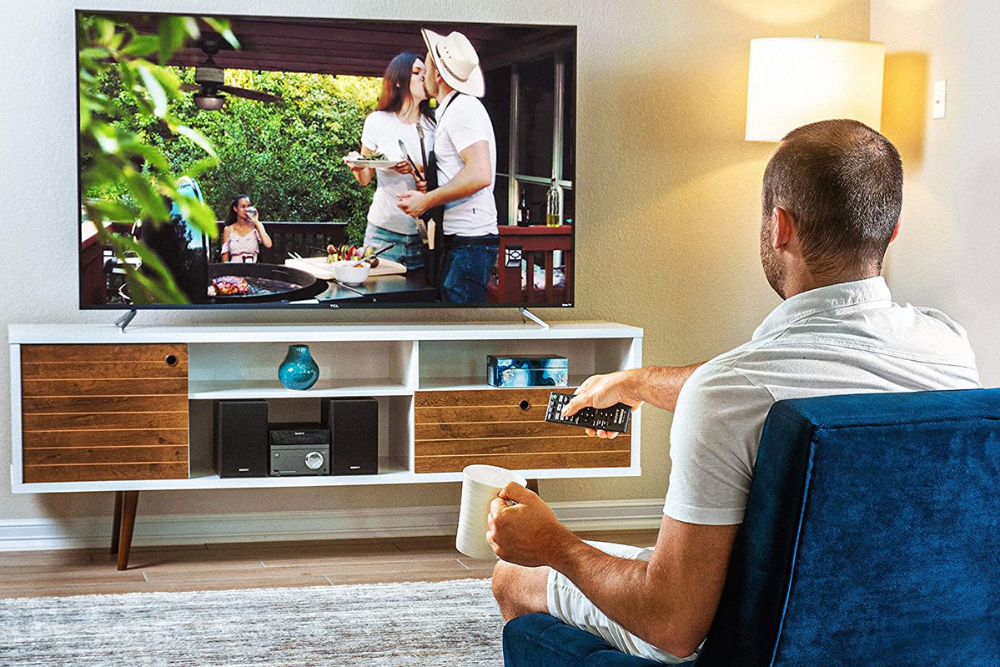
What to Consider When Choosing the Best Home Stereo System
Home stereos have a purpose: to play music. Precisely how they play music is the critical point of differentiation between models. It’s important to pinpoint the functions you’re looking for in a home stereo system, particularly when it comes to sound quality, and secondarily with regard to special features. Consider the following when choosing a home stereo system.
Size
To select a stereo system of appropriate size, think about where in your home you anticipate locating the system. Its weight and dimensions must be suitable for the surface that the stereo will sit upon, be it a tabletop, shelf, TV stand, or entertainment center.
Wired vs. Wireless
Most home stereos are powered via an electrical outlet. Some, however, are wireless models that run on rechargeable batteries and operate over your home internet network.
Whereas wireless setups offer the convenience of portability, wired systems provide the reliability of an uninterrupted signal, unaffected by internet connectivity issues.
Sound Quality & Volume
Sound is measured in watts, so knowing the wattage output that a home stereo delivers can help you determine whether or not its volume output would be sufficient for a particular area. Home stereos typically range from 25 watts on the low end to 800 watts on the high end. A general rule of thumb is to choose a model with enough wattage to fill—but not overwhelm—your listening space.
Some stereo systems have subwoofers, which are speaker components that enhance low-frequency bass sounds. Adjustable treble and bass controls, which many system offer, make it possible to modulate and customize sound quality to match your preference.
Controls
Home stereos typically feature an array of controls, for volume and often a variety of other settings. While some manual features are simple turn-knobs or digital buttons, many stereos come with a remote control. Control functions are one of the major differences between models.
Placement
The placement of your stereo system can affect the quality of its sound output. Leave at least 2 to 3 feet between the speakers and any walls in order to avoid reflecting the sound off the wall or overamplifying the bass. Angling the speakers toward the listening area (called a toe-in) can also help enhance the sound.
The height at which you place your home stereo, or its speakers, can also affect sound delivery. Don’t hesitate to experiment with arranging the stereo and its components—every space is acoustically different.
Our Top Picks
Best Overall
Onkyo Home Audio System CD Hi-Fi Mini Stereo System
See ItThe Onkyo system puts a classic twist on its modern stereo. With 40 watts of power, this three-piece unit is compact enough to sit on a bookshelf but powerful enough to fill a room with quality sound, with the Onkyo speaker’s full digital audio processing—coupled with an efficient digital amplifier—ensuring even sound distribution. The system includes a single-disc CD player, AM/FM tuners, a remote control, and two-channel configuration. Also featured are 30 radio resets and Super Bass Control.
Affordable Favorite
Boytone Wireless Bluetooth Stereo Audio Speaker
See ItBoytone’s wireless stereo uses Bluetooth technology to stream music and is compatible with most Bluetooth-enabled smartphones, computers, or tablets. These devices remain connected up to 33 feet away from the stereo. There’s a 3.5mm audio jack for non-Bluetooth devices as well.
This budget-friendly stereo features two speakers, both with a subwoofer, a built-in amplifier, and a 30-watt audio output. A wireless remote control is included and the entire system measures 22 by 10.25 inches.
Best with Turntable
DIGITNOW Bluetooth Record Player Turntable
See ItThe DIGITNOW is simple in design, brining a modern appeal to turntable technology. This model is equipped with two detachable speakers, 36 watts of power, and the ability to stream music from your favorite devices via wireless Bluetooth connection. In addition, the DIGITNOW includes a single-disc CD player, a cassette player, AM/FM radio, an auxiliary input, and a remote control.
Loudest System
LG CM4590 XBOOM Bluetooth Audio System
See ItThe LG delivers powerful sound with a whopping 700 watts of audio. Plus, you can wirelessly sync your audio devices (or compatible HDTV) directly to the stereo without without having to worry about wires, thanks to the system’s Bluetooth capabilities. The dual-USB ports let users connect multiple devices at the same time, and the onboard Auto-DJ feature ensures a smooth transition from track to track.
Honorable Mention
Sony Micro Hi-Fi Stereo Sound System
See ItThe Sony system’s sleek, three-box design allows for individual speaker placement to produce a broader stereo effect. Those speakers use Mega Bass technology for enhanced low-frequency tones and are capable of 12 watts of output. With a CD player, radio tuner, Bluetooth functionality, and USB compatibility, this Sony audio system can be controlled via on-unit controls or the remote control.
FAQs About Your New Home Stereo System
Choosing and setting up a new home stereo needn’t be complicated. Here are a few questions and answers to help you make the most of your home stereo listening experience.
Q. What is the loudest home stereo system?
If you’re looking for the loudest home stereo, it will reach around 800 watts. The LG CM4590 XBOOM Bluetooth Audio System is one of the best options with 700 watts.
Q. What is the best small stereo system?
Ideally, a small stereo would fit nicely on a countertop or bookshelf. One of the best options when looking for a small stereo system is Yamaha MCR-B020BL Micro Component System.
Q. What do I need for a home stereo system?
Your home stereo will likely come with all the necessary components to make it operational. You’ll need an electrical source, and possibly an extension cord to power it if it’s a wired system. Consider a surge protector to shield the stereo from damage during storms and power surges.
Q. How do you set up a home stereo system?
Your new home stereo will come with the manufacturer’s instructions for set-up. Before putting it together, consider factors such as accessibility and stability. Have your WiFi password ready for Bluetooth connectivity. Once you determine which space is right for your system, follow the guide for installation.
